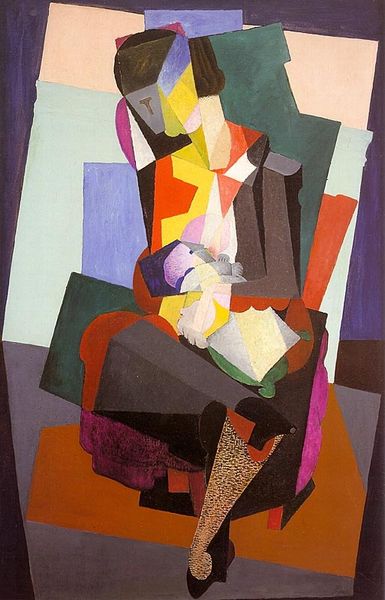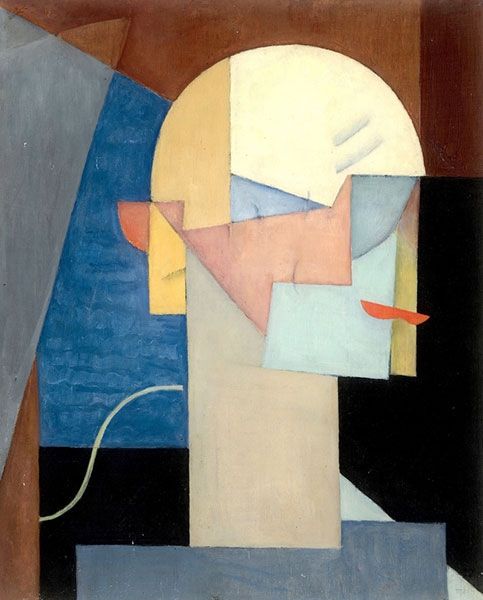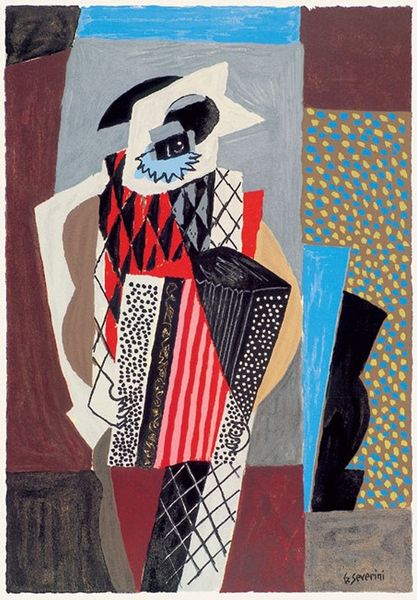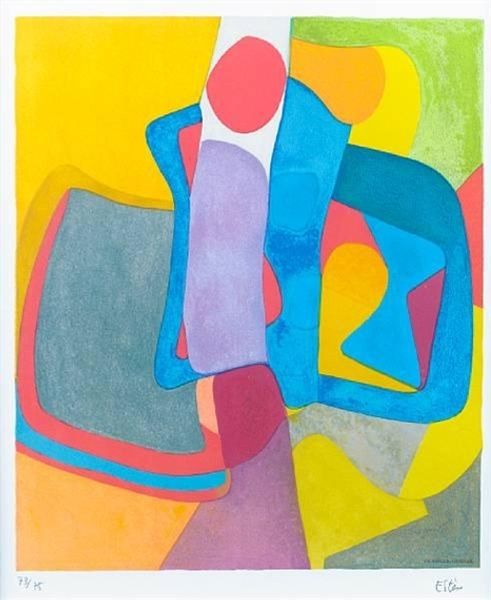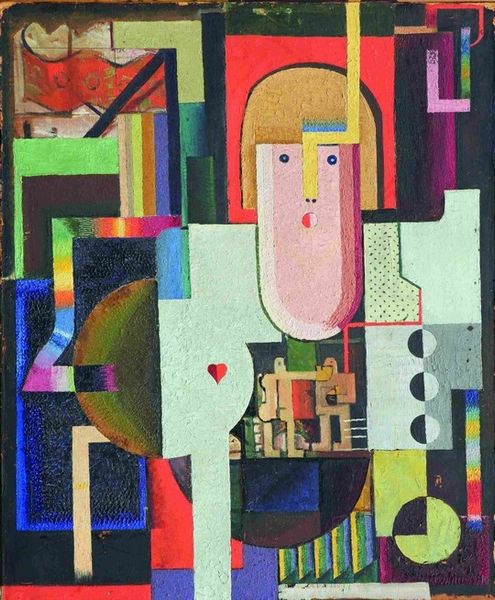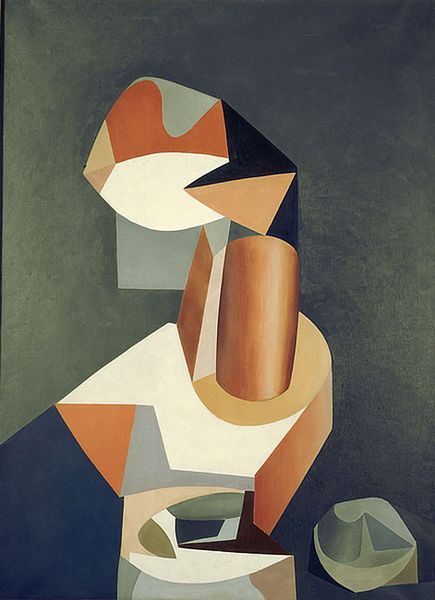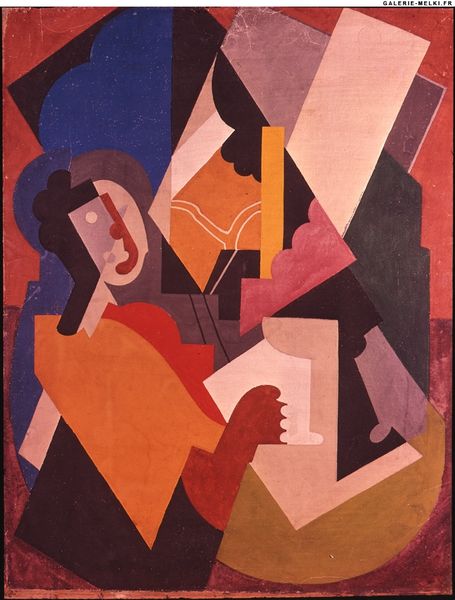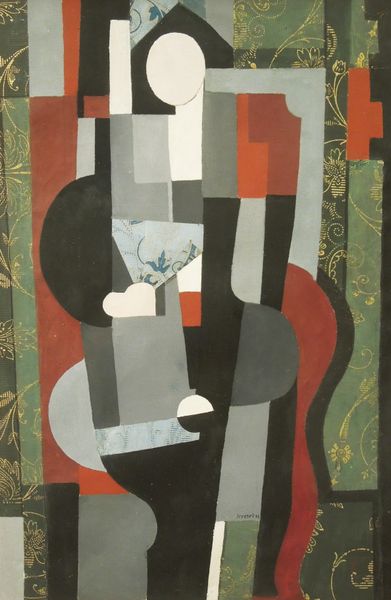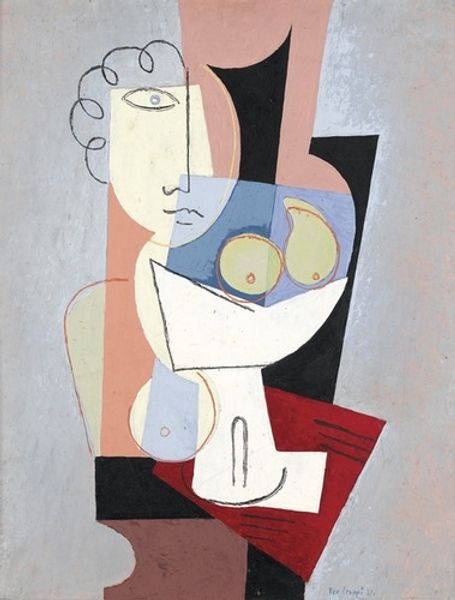
Copyright: Public domain US
Editor: So, this is Gino Severini's "Woman with Green Plant," painted in 1917. It's oil and ink on canvas. The colors are unexpectedly cheerful given the fractured, Cubist style. How would you begin to approach an interpretation of this work? Curator: Considering Severini's engagement with Futurism and Cubism, I think it's crucial to look at the materials and processes employed. How does the application of oil and ink contribute to the fragmented effect? Look at how the smooth, blended areas contrast with the sharply defined inked lines. That contrast itself becomes a commentary on industrial production versus traditional craftsmanship. Editor: I see what you mean. The sharp lines almost seem mass-produced compared to the softer, more painterly sections. Is it also a comment on the social context? Curator: Absolutely. Think about Italy in 1917. World War I was raging. How does the fractured nature of the portrait reflect the societal fragmentation and the changing roles of women during wartime? Are we seeing a new kind of female representation emerge as the means and mode of its production rapidly change around it? Editor: That’s fascinating! The “green plant” also strikes me. Why a plant, seemingly juxtaposed without traditional art historical context? Curator: Consider what a 'green plant' represented within the context of a wartime economy. A promise of nature and renewal is presented in geometric relief. What would previously have taken artisan skill and planning could be reproduced, a commentary on societal resilience despite heavy attrition of labor forces across Europe during that time. How does that symbolism interact with the industrial production we discussed? Editor: I never would have considered that. Thinking about the plant as an expression of economical symbolism alongside changing workforce roles... It definitely provides new avenues for considering its themes! Curator: Precisely! Approaching art through its materials and its methods provides a deeper, socially grounded understanding. We uncover commentary on industry and societal context woven into its very fabric.
Comments
No comments
Be the first to comment and join the conversation on the ultimate creative platform.

